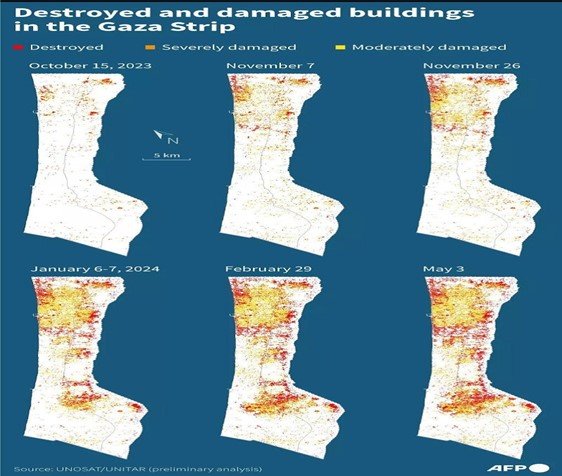Biden’s Ceasefire Initiative for Gaza: Will Hamas and Israel agree?
Seven months ago, on October 7, 2023, a devastating attack was carried out by Hamas against Israel. In response, the Israel Defense Forces (IDF) launched aerial strikes and ground operations within the Gaza Strip.
Despite ongoing efforts, attempts to secure the release of over one hundred Israeli and foreign hostages captured by Hamas during the initial attack on October 7th have proven unsuccessful. The current whereabouts and health conditions of these hostages remain unknown. The situation has triggered a mass exodus from Gaza, with nearly two million residents – comprising more than 85 percent of the total population – forced to flee their homes since October 2023.
Biden's Gaza Ceasefire Plan
In a bid to end the devastating conflict in Gaza, U.S. President Joe Biden has unveiled a three-phase Israeli ceasefire proposal tied to the release of hostages. However, the move raises questions about whether it’s a genuine diplomatic effort or a strategic maneuver aimed at bolstering Biden’s political standing ahead of the November elections.
The Proposed Ceasefire Plan
Phase 1
- 6-week ceasefire with Israeli forces withdrawing from populated areas in Gaza
- Release of some hostages (elderly and women) in exchange for hundreds of Palestinian prisoners
- Return of Palestinian civilians to their homes
- Entry of 600 humanitarian aid trucks per day into the devastated enclave
Phase 2
- Exchange of all remaining living hostages, including male soldiers
- Complete Israeli withdrawal from Gaza
- Permanent ceasefire implementation
Phase 3
- Major reconstruction plan for Gaza
- Return of “final remains” of hostages to families
Israeli Response: Cautious Approval with Conditions
While Israeli Prime Minister Benjamin Netanyahu has authorized his team to present the deal, he insists the war won’t end until all hostages are returned and Hamas’ military and government capabilities are destroyed.
Separately, the Israeli military claims to have ended operations in north Gaza’s Jabalia area but continues targeting alleged Hamas strongholds in Rafah.
According to Israeli sources, more than a third of the remaining 120 Gaza hostages are believed dead. Out of about 250 people taken on October 7, scores were freed in a November truce, while some bodies have been recovered by troops. Hamas claims several hostages perished in airstrikes or due to lack of healthcare amid Israel’s targeting of hospitals and medics

Biden's Potential Motives: Winning Elections or Resolving Crisis?
Critics argue Biden’s ceasefire push is driven by domestic political calculations rather than a genuine desire for peace. Recent polls show declining confidence in Netanyahu among Democrats and Democratic-leaning independents, fueled by Israeli atrocities in Gaza.
Additionally, 79% of Arab Americans hold an unfavorable view of Biden, compared to 56% for Donald Trump – a concerning trend in key swing states like Michigan and Wisconsin.
Netanyahu's Domestic Pressure Cooker


The hawkish Netanyahu leads a fragile hard-right coalition and faces intense pressure from multiple sides. Families and supporters of hostages demand a truce deal through mass protests, while far-right allies threaten to topple the government if concessions are made.
As the crisis in Gaza deepens, with over 36,000 Palestinian deaths and catastrophic hunger levels, Biden’s ceasefire initiative raises crucial questions about its true motivations and prospects for success




